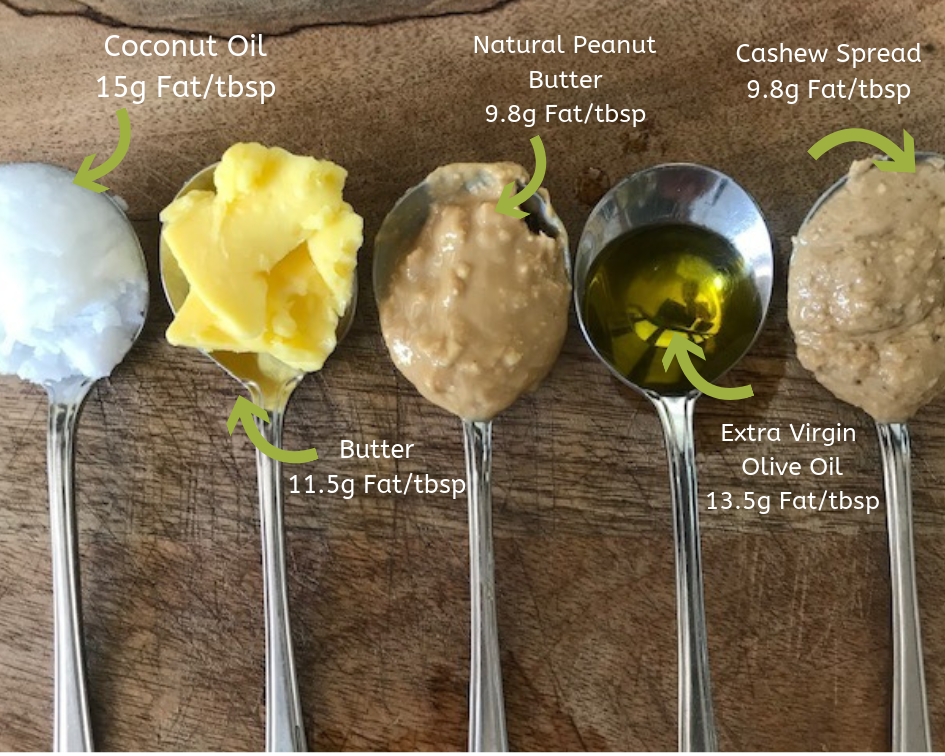It’s a scary word right? Fat. Ingrained from years of exposure to “fat blasting” advertising, and “non-fat” food products – it’s no wonder we quickly begin to get worried that fat is bad for us, or that fat will, in fact, makes us fat…
But, just like there are nutritional carb options and not so nutritional (but damn tasty) carb options, it’s the same when it comes to eating fats. Fat is one of the three major players when it comes to everyday macronutrients (protein, carbs, and fat) and has a huge role to play in keeping our bodies happy, healthy and functioning.
Figuring Out Your Fats
There are two main categories to get to know when it comes to figuring out the best way to get in your daily fats. These are saturated fats, and unsaturated fats. It’s likely you’ve heard of these before, and are probably aware of which one is the more nutritional choice… (you smarty pants, you’ve totally figured it out haven’t you!)

Saturated Fats
You guessed it! Saturated fat generally has a lower nutritional value when compared to other types of fats – but that doesn’t mean you can’t eat it in moderation and still be fighting fit. Saturated fats have a stable chemical composition, so at room temperature they are solid. They are easier to work with when making food products – hence why we see higher levels of saturated fat in processed and packaged foods. You’ll also find a bit of saturated fat in most meat and dairy products.
Nutritionally speaking, saturated fat in high levels can cause a rise in cholesterol and if consumed at high levels frequently, can lead to heart problems. So how much is too much? The Australian Heart Foundation recommends that our saturated fat intake doesn’t exceed more than 10% of our daily energy intake. So your coffee, cereal, and yogurt with brekky, chicken at lunch and nice piece of steak for dinner will fit well within your daily saturated fat intake – but throw in a morning doughnut or two, snack on some potato chips, and sneak in some milky chocolate after dinner… you may find yourself exceeding that limit.
Saturated fat also has a little sidekick by the name of Trans Fat that really has little to no nutritional value and can cause a lot of damage to that balanced cholesterol you’ve worked so hard for. Trans Fats can increase our risk of heart disease rapidly if over consumed, and advice from The Australian Heart Foundation is to limit your trans fat consumption to a little as possible (they say 1%!) So do your homework and check those nutritional labels, most of the time you will be able to find a similar product with zero trans fats.

Unsaturated Fats
If you’ve heard people refer to “healthy fats” before, unsaturated fats are what they are talking about. This type of fat comes in a few different forms, we’ve got polyunsaturated, monounsaturated, omega-3, and omega-6 to name a few. Unsaturated fats are a lot less stable than saturated fats and work to balance your cholesterol – increasing good cholesterol (HDL) and decreasing bad cholesterol (LDL). Unsaturated fats can actually improve your cholesterol levels overall (hence all the hype about getting those healthy fats!)
So where do you find them?
A few of the most popular and everyday forms of unsaturated fats include extra virgin olive oil, nut and seed oils like macadamia oil, flaxseeds, avocado, almonds, walnuts, fish, and a personal favourite – dark chocolate. The darker the chocolate, the less saturated fat and in a balanced diet that’s a winner!

The biggest thing we want you to take away from this blog is that all fats are not created equal. For a balanced lifestyle try your best to get to know the fat content of your favourite foods and with all you’ve learned above, make the choices that are going to benefit your health long term while still making plenty of room for the foods you love.
